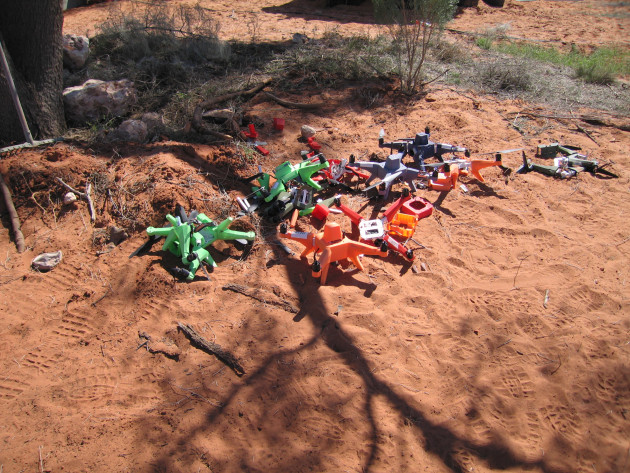Canberra defence and technology company EOS has demonstrated its gun and laser counter-drone systems to defence officials and foreign defence attaches during trials in outback NSW.
Over three weeks, EOS tested its Slinger and Titanis counter-unmanned aircraft (UAS) and directed energy counter-UAS systems on the vast Klondyke Range Complex, 800 km north-west of Sydney.
“We are demonstrating the hard kill and laser engagement systems, part of the Titanis counter-drone capability – Slinger on EOS’ Denali 4x4 and the 34-kilowatt high energy laser system engaging drones at ranges out to 1500 metres,” Matt Jones, EOS Executive Vice-President for Defence Systems, told ADM.
“This technology is actually going to Ukraine. The hard kill engagement Slinger system have been purchased by the US for donation to Ukraine. The laser technology is still being finished in terms of development so that’s not currently under consideration.”
The gun technology is now fully mature at TRL9 and being used in the field for ground and counter-drone operations.
The war in Ukraine has demonstrated that drones of every description are likely to be encountered in any future conflict in which the Australian Defence Force participates.
That includes cheap surveillance drones reporting on troop movements in real time, improvised suicide drones equipped with small explosive devices, through to what are essentially cruise missiles such as the Iranian Shahed 136 which has been extensively employed by Russian forces.
That’s placed a premium on counter-drone capabilities, with growing global interest in Australian technology.
Visiting the Klondyke Range Complex this week were representatives of the ADF and delegations from Europe, the Middle East, North America and South-East Asia.
Of special interest was a demonstration of EOS’ 34-kilowatt high energy laser system which destroyed small quadcopter drones at ranges out to 1000 metres and beyond. This is housed in a shipping container.

“This is really an opportunity for us to test the system in field conditions against free flying drones in an environment where we can manage the risk. We are well away from anywhere but there are still risks to be managed. We have flights overhead,” Jones said.
“The employment of high energy lasers as a weapon system is something that brings with it a completely new framework of risk. Coming to Klondyke allows us to test and develop that new capability in an environment where we can manage the risk.”
The danger is to passing air traffic, which is closely monitored, including by data from of aircraft ADS-B beacons. All activity ceases when aircraft are within a designated zone.
Putting that in perspective, in Australia, handheld laser pointers may be no more than one milliwatt. Pointing laser pointers at aircraft or helicopters could earn you jail time.
Ian Hilton-Cowie, EOS Head of the Directed Energy team, said the beam of their 34-kilowatt laser was invisible to the naked eye and deadly. Consequently, when the laser is operating, everyone on site is inside a shipping container, with window shutters down and wearing protective eyewear.
Curiously, the ADF has no specific counter-drone capability within the Integrated Investment Plan (IIP). That plan was formulated well before the drone risk became truly apparent. The IIP is now being re-prioritised.
Jones said he expected a counter-drone program would be included in the new IIP, although right now, technically, there is no counter-drone program.
“We are in contract with Army to demonstrate counter-drone technology via an extension of an Innovation Hub program which includes hard kill engagement systems, such as Slinger and the Titanis counter-drone systems,” he said.
“We are a sub-contractor to Acacia Systems who have the Command and Control environment to provide an integrated solution.”
Disclaimer: The author travelled to the Klondyke Range Complex as a guest of EOS.



